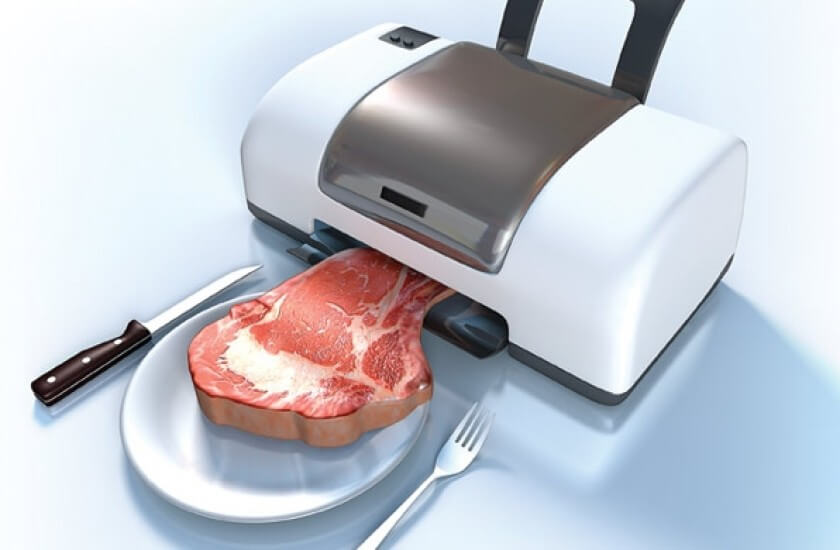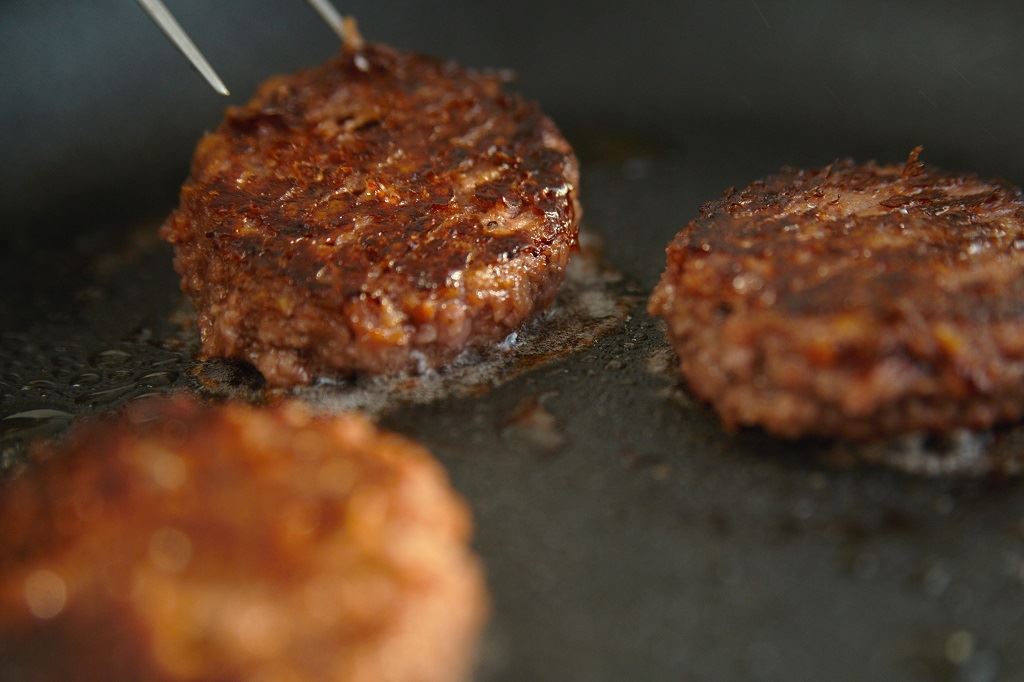![3D printed alt-meat burgers [Image: Redefine Meat]](https://fabbaloo.com/wp-content/uploads/2020/05/RedefineMeat-Burger1_img_5eb090b7c3d66.jpg)
3D printing is redefining manufacturing; why not also redefine meat?
That’s exactly what a young Israel-based company, aptly called Redefine Meat, proposes to do — and they’ve just pulled in a $6 million investment to do so.
Why 3D Print Meat?
The perhaps obvious first question regarding this venture is a simple one: why?
That’s relatively simple, in fact; the meat industry as it stands today is simply not sustainable for the growing global population. The specifics of that discussion belong better on other focused-interest sites, but a quick glimpse even into the popularity of the Impossible Whopper (and other Impossible and Beyond burgers and their ilk) demonstrates that there is a very strong demand for meat substitutes.
So why specifically turn to 3D printing? Most of our tofu and other plant-based protein sources are, well, not 3D printed. This is by no means the first endeavor to propose 3D printing food, or even 3D printing meat — or, more specific still, to 3D print meat substitutes. There’s something about the technology that lends itself well to advanced food production.
For Redefine Meat, the argument is relatively similar to many other 3D printing applications. They explain:
“[T]he use of 3D printing to produce alternative meat products will enable the creation of a highly productive and flexible 21st-century supply chain that is dramatically more sustainable than current animal factory farming and meat processing.
The company is developing a comprehensive solution that combines a proprietary semi-industrial 3D digital printing platform — in fact, one of the world’s fastest 3D printers, a 3D meat modeling system and plant-based food formulations. The solution delivers a new category of complex matrix ‘meat’ that is both delicious and craveable, while also being cost effective and scalable.”
Really, some of that — particularly the “complex matrix” — sounds close to some advances we’ve been seeing in bioprinting. Which, after all, is itself sort of a meat 3D printing method, as bioprinting involves the use of living human or animal cells. For the sake of relating this particular discussion to foodstuffs, though, we’ll drop the comparisons there.
The type of matrices utilized in 3D printing with cells, though, are likely a relevant part of Redefine Meat’s proprietary platform and likely keep their “meat” closer to non-quotes meat.
Investment
Today, Redefine Meat has announced a hefty investment.
No 3D printed meat substitute companies (that I know of) have yet entered the commercial market; a $6 million influx might give Redefine Meat a leg up for actualization. The money comes in from a seed round led by CPT Capital, along with Hanaco Ventures, The PHW Group, and “leading Israeli angel investors.”
The investment isn’t wholly financial; CPT Capital and Hanaco Ventures will see representation on the Redefine Meat board.
Most of the investors seem to have had an eye out for new agri-food innovations, judging by the press release. That shows that not only is there a market for alternative-meat products, but it is global and anticipated to have some impact.
CPT Capital already has a “portfolio of companies that are working to replace animals in the food supply chain,” as Investment Director (and new director of the Redefine Meat Board) Costa Yiannoulis explains, showing their existing interest in this area. PHW Group is noted as being “Germany’s largest poultry company” — so it sounds more like a company that would prefer to keep meat, well, meat. But their investment is also interesting for this perspective.
“There is currently no other company that has demonstrated such an impressive development in the field of 3D printed meat. The PHW Group sees Redefine Meat as a strategic investment, especially regarding the future product development for the European market and our broad distribution network,” said Peter Wesjohann, CEO PHW Group.
Goals
![The “meat” 3D printer [Image: Redefine Meat]](https://fabbaloo.com/wp-content/uploads/2020/05/RedefineMeat-3DPrinter1_img_5eb090b83d7d4.jpg)
Redefine Meat is setting a go-to-market goal for next year.
In 2020, the team hope to be marketing their 3D printed “meat” that they say is “100% predictable and replicable” (impressive stats for any 3D printed product, as we often discuss) as well as having “a 95% smaller environmental impact than animal meat,” no cholesterol, and a lower cost than traditional meats.
Those are some big promises for a concept that still sounds…weird, frankly. I’m not a vegetarian myself, but do applaud the alt-meat efforts and certainly enjoy an actually-tasty veg protein option. To date, lab-made “meats” haven’t really appealed to me. That this one is plant-based (actual food!) does make it more promising than some products I’ve heard about in this industry that just sort of say they’re “lab-made meat alternatives” without offering a lot of detail or evidence.
Redefine Meat has some evidence, though, which should be heartening. They claim to offer “the same appearance, texture and flavor of animal meat used for steaks, roasts and stews.” No one really wants to take a statement like that at face value, and we shouldn’t have to; the company has already served up their dishes to real people with real palates.
“Our goal is not just to develop a new food product, but to introduce a new technology for developing, producing and scaling alt-meat products. We have already successfully printed great products for multiple foodie events, and over the coming 12 months, we will take the technology to the next level where we expect to make a huge impact on the meat market and the future of our planet. We’re delighted to have secured this investment, and to be working with high-quality investors, who share our vision and can support Redefine Meat on its path to become an industry leader,” said Eshchar Ben-Shitrit, Co-Founder and CEO at Redefine Meat.
Granted to the untrained eye their 3D printer still looks kind of like one of those tongue-in-cheek photos circulating years ago when “3D printed meat” started to be discussed, just a little more 3D than 2D.

But if they’re actually making a viable alt-meat on this thing? I’d be happy to be a believer.
Via Incus Media and Redefine Meat

